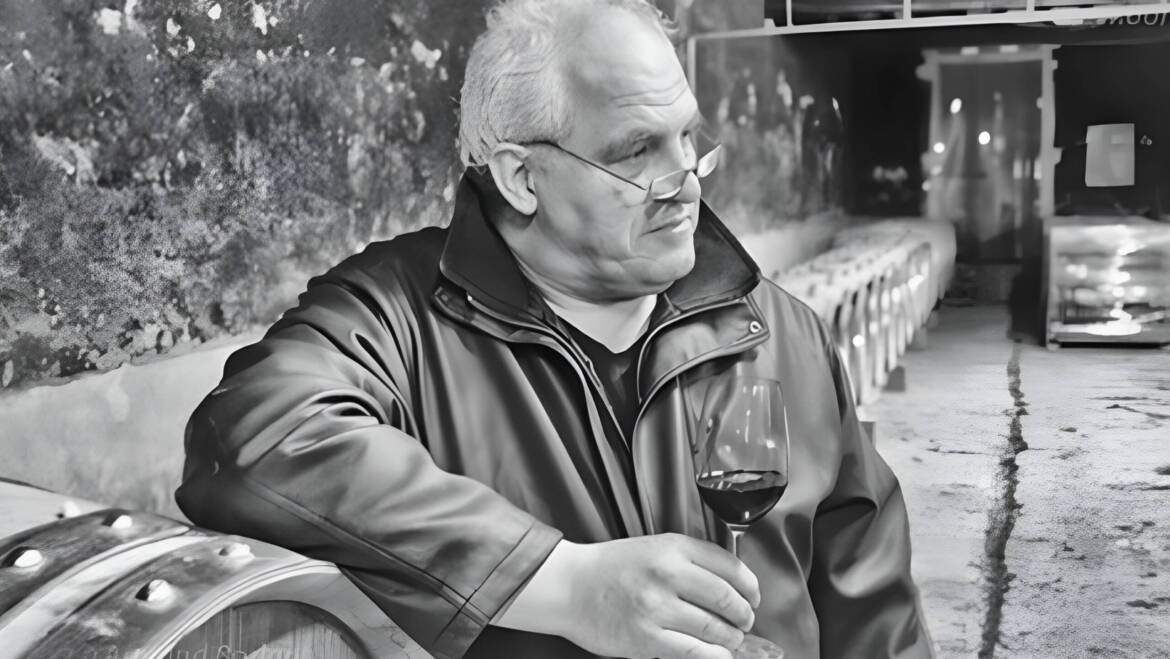2020 BEAUJOLAIS ROUGE
Domaine Jules Desjourneys
TOTAL PRODUCTION | 2,200 CASES
£29 per bottle
includes VAT & delivery
Original Packaging: 6 x 75cl
READY FOR UK DELIVERY
Please note we kindly require orders in multiple of six bottles
Delivery Charges apply for orders below £500 ex VAT
“Produced from heritage selections of Gamay planted in Saint-Véran, Duperray’s 2020 Beaujolais bursts with aromas of rich berries and plums mingled with spices, petals and carnal nuances. Medium to full-bodied, satiny and fleshy, with racy acids and a long, mouthwatering finish, it will be irresistible young”
91 Points
Drink 2021 – 2035
WILLIAM KELLEY
THE WINE ADVOCATE
Produced by the illustrious Burgundy maker, Fabien Duperray, the Beaujolais Rouge from Domaine Jules Desjourneys is a total stunner. From selected parcels in the Southern vineyards of Saint-Véran, this piquant red offers joyful fruit spanning from wild strawberries to juicy dark cherries. With an open and charming personality, each time we taste, we cannot stop smiling at the Pinot-like elegance and charm of this Beaujolais.
Thanks to our direct access, we can offer the best price for you cellar, a flat £29 per bottle delivered, whereas other retailers will ask you up to £36 for the same exact juice.
DOMAINE JULES DES JOURNEYS
THE TERROIR
Proprietor and winemaker Fabien Duperray works with five appellations in Beaujolais: Fleurie, Chénas, Moulin-à-Vent, Morgon and Beaujolais.
Duperray chose Fleurie because “it is a whole constellation of “grands vins””. He believes there are so many great terroirs in Fleurie: Les Moriers, Les Garants, Grille Midi, Les Amandiers, Champagne, Le Bon Cru… These all have the same particular geology of granitic sand, and as it’s rare for a cru to have such homogeneity, this means that it’s the exposition and the altitude that makes a difference in the wine. This is what makes Fleurie so exciting for Duperray. For him, Fleurie’s calling card, its unique characteristic, is its seductiveness. “It has an elegance and a refinement that is close to that of Chambolle-Musigny. It is very finely balanced”, he told la Revue du Vin de France. He declares his Fleurie La Chapelle des Bois one of the greatest terroirs of gamay in the world, as it benefits from all expositions, except north-facing. The age of his vines ranges from those planted in 1893, to the “young vines” of a mere 70 years of age (certified by Ecocert)!
For Duperray, the cru of Moulin-à-Vent is up there with Fleurie in terms of quality. He thinks that as long as the terroir here is not overworked, the vines can produce beautiful fruit until the age of 50-70 years, like this producing a true expression of their origin. He believes that Moulin-à-Vent also has magnificent terroirs, which are those that are the prolongation of Fleurie. What he thinks is so fabulous about these two appellations is the constellation of grands vins on such a small territory.
Finally, Duperray also loves Morgon for its muscles, which he finds seductive and age-worthy, albeit not quite in the same way as Fleurie and Moulin-à-Vent. From these terroirs he coaxes a very particular expression of gamay: deeply coloured with a “trademark” Desjourneys density; seductive with a rare energy, thrilling intensity and depth, yet finishing precise and defined, with freshness and elegance combined. These are refined and quite beautiful wines.

FAMILY HISTORY
” I have the luxury of not having to sell any wine unless I want to, when it’s ready. ”
– Winemaker Fabien Duperray
In 2019, the Bettane et Desseauve wine guide placed Domaine Jules Desjourneys Moulin-à-Vent in their top 10 best wines, calling proprietor Fabien Duperray “Un très grand connaisseur du Beaujolais… un titan à la vigne”.
Bettane & Desseauve were only the latest of a crowd of wine critics, reviewers and collectors to join the cult-like following for these unique wines. With their magnificent balance, concentration, elegance and tension; their exceptional digestibility; their profundity, freshness, and pure pleasure – yet with clear potential to age for the long-term, these wines’ reputation is well deserved. But just who is Jules Desjourneys?
Jules Desjourneys is the creation of Fabian Duperray, formerly fine wine agent, now fine wine maker. His Beaujolais wines come from very old vines on some of the best terroirs of Fleurie, Moulin-à-Vent, Chénas and Villié-Morgon, and he likewise works with stellar lands in the Mâconnais, in partnership with Fuissé vigneron Christophe Thibert. The emblem of his domaine is a unicorn; his website displays a tribute to Jules Chauvet, after whom the domaine is named. These cues paint a picture of a person with big confidence in his winegrowing, and big ambitions for his wines, yet who is not about to forget his roots and influences.
Duperray has undertaken quite an extraordinary journey to become a hugely celebrated winemaker, at a relatively mature age, in what has been a largely un-celebrated appellation – until now. Grandson of a “canut lyonnais” (traditional Lyon silkworker); son of a teacher, his is not the usual multi-generational vigneron story, although this inheritance gives us a clue as to the origins of Duperray’s renowned single-minded pursuit of an artisanal, beautiful product. He says the gift his parents gave him was books and culture. The family didn’t have much money, but for special occasions his father would open a good bottle of wine and when Duperray was twelve years old he tasted Château Margaux 1964. He thought the wine was so extraordinary that right there and then he declared to his family that he would become a vigneron.
The question then was where, and how. Duperray quickly realised that he did not want to be one of many tiny growers in a starred terroir, rather, he wanted to go it alone with his own domaine. To do this, he needed to earn the capital. So, he trained first in hospitality, then later became a salesperson for a Beaune courtier, before setting himself up as an independent wine agent for some of the greatest French wine domaines known to the wine-drinking world. This is where he earned what he needed finally to become a vigneron in 2006, after following studies at viticulture school. Crucially, being a wine merchant had also allowed Duperray to evaluate unknown wine producers, and to learn to sniff out hidden gems. A great training this turned out to be: in 1992 he discovered Aranud Ente, long before anyone else had seen the value in these wines. What’s more, he had the opportunity to delve deeply into the terroirs of Beaujolais… and here he discovered “his” land.
Duperray is known as a “personnage extrême”: an intense, single-minded perfectionist, a man of maniacal passion, curious, restless, and driven by a search for hidden treasure. With the fervent desire to make wine expressing what he recognised as the top quality of the grands terroirs of Beaujolais, he went out to find and buy these beautiful terroirs planted with old vines.
Rather than making “glouglou” or mass-produced wine, he wanted a Beaujolais domaine that would express and celebrate the singularity of the land. Calling himself no less than a “sourcier du vin” (someone with an exceptional ability of discovery), Duperray does indeed seem to have found a way to make Beaujolais great again. He is confident enough in the quality and what he sees as the “poetry” of Fleurie terroir, that he does not hesitate to compare this Beaujolais cru to Chambolle-Musigny.
In 2007 Duperray purchased ancient Gamay vineyards in Fleurie and Moulin-à-Vent, where some vines were more than 140 years old. In 2014, he partnered with Fuissé’s Christophe Thibert to buy some parcels of Chardonnay in a range of Mâconnais appellations. The Jules Desjourneys domaine now comprises 17 hectares in total, of which 15 in Beaujolais, 13 in the Mâconnais. These are great terroirs of old vines (average age: 60 years), farmed biodynamically, with limited yields (less than 30hl/ha); the grapes are picked at precise ripeness and given gentle fermentations with indigenous yeast, then long élevages. Duperray leaves nothing to chance where his wines are concerned. From the beginning, he has put working the land at the forefront of his métier. He uses no chemicals, just elbow grease! Duperray counts as his influences JeanFrançois Coche-Dury, Jean Marie Balland, Jacques Puisais, and Jules Chauvet, not least in the attention to detail that Duperray lavishes on the viticulture and vinification. This sort of hard work has a higher cost than usual, but Duperray argues that it’s in proportion to the pleasure it brings to the wine. He is very direct about the cost of quality wine production, and what it means for the price to the consumer. If you want clean viticulture, that’s going to cost you, he says. Do we want mere beverages, or do we want cultural products? In everything Duperray does, he is looking for refinement, for detail, precision, freshness, sapidity, a natural beauty. “Even a “petit vin” can be complex”, he told Revue du Vin de France.





